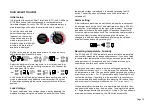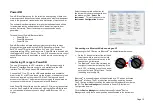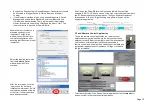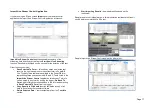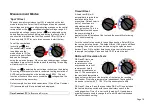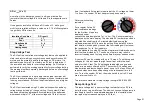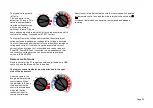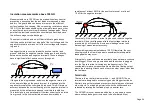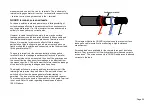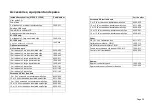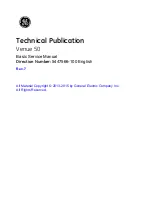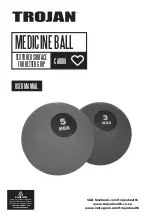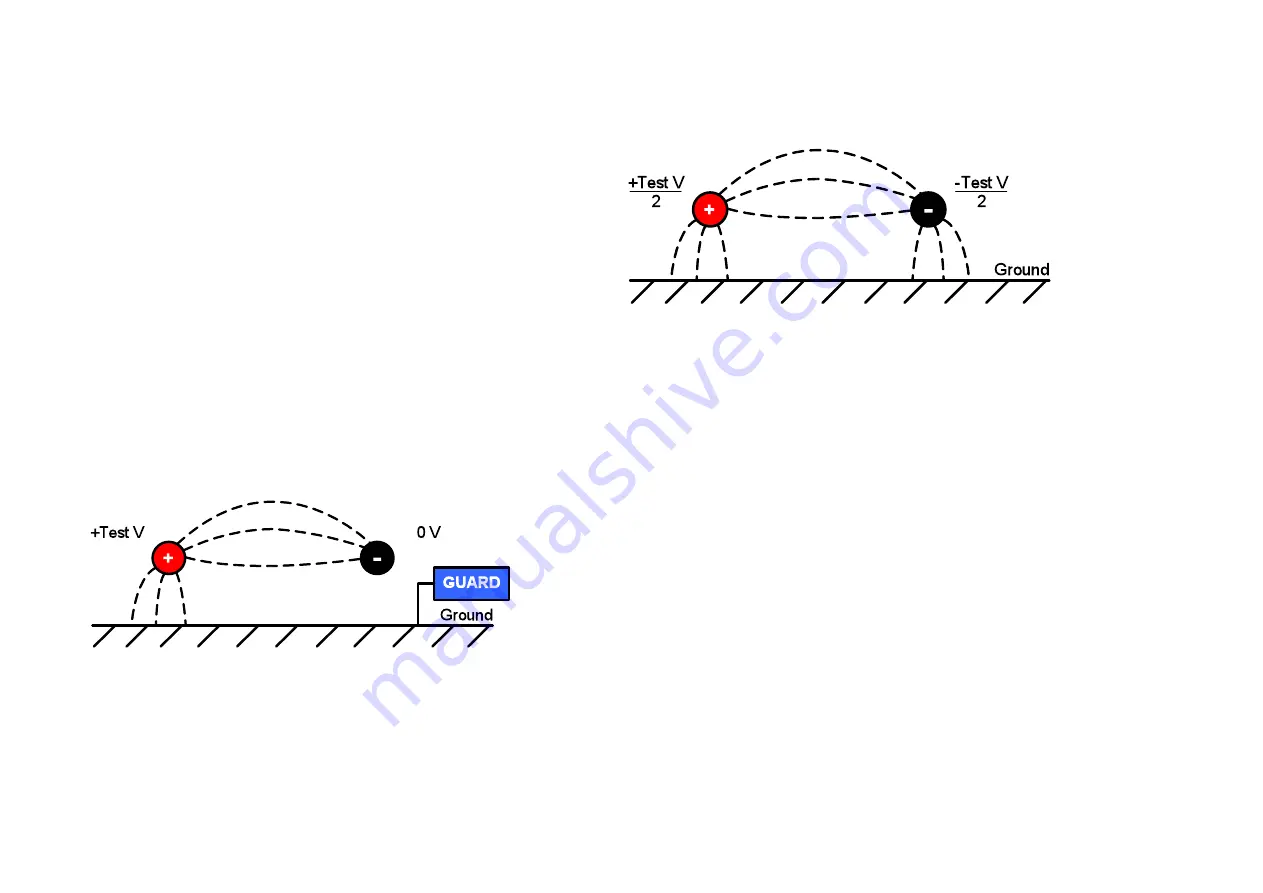
Page 24
Insulation measurements above 100 G
Ω
Measurements up to 100 G
Ω
can be made without any special
precautions, assuming that the test leads are reasonably clean
and dry. The guard lead can be used to remove the effects of
surface leakage if necessary. When measuring resistances above
100 G
Ω
, the test leads should not be allowed to touch each other,
or any other object since this will introduce leakage paths. Sharp
points at the test lead connections should also be avoided since
this will encourage corona discharge.
The output is isolated, and so will float relative to ground such
that the positive terminal is at plus half of the test voltage, and the
negative terminal is at minus half of the test voltage with respect
to ground.
Leakages therefore occur between the positive terminal and
ground, between the negative terminal and ground, and directly
between the positive and negative terminals. These leakages
have a significant effect and can occur through air.
If the guard lead is grounded, and since the negative terminal is
at the same voltage as the guard terminal, the leakage into the
negative terminal will be considerably reduced. This will improve
accuracy because the current flowing into the negative terminal is
measured by the instrument and used to calculate resistance.
This technique is only permissible if the item under test is isolated
from ground. In this context
isolated
means insulated by a
resistance of at least 5 M
Ω
for the positive terminal, or at least
10 k
Ω
for the negative terminal.
Conversely, if the positive terminal is grounded, then the negative
terminal will be at a voltage equal to the test voltage relative to
ground, which will result in an increase in leakage current, and
worsening of measurement accuracy.
When making measurements above 100 G
Ω
therefore, the user
should ground the Guard lead where possible otherwise parallel
leakage paths may occur.
Alternatively, screened leads are available as an optional accessory
from Megger. When using a screened lead the screen is plugged
into the Guard terminal, diverting any leakage currents. This
considerably improves measurements made with a floating output,
where the leads might touch each other or another object other than
the test piece.
Terminals
There are three test terminals , - and GUARD. These
terminals are designed to accept only genuine Megger test leads.
Shutters across the terminals prevent accidental ingress of dirt and
other objects. Test lead plugs interlock with the shutters and are
released by rotating the test lead plug by a quarter turn.
The GUARD terminal, as explained below, is only used in cases
where surface leakage currents need to be eliminated. Most

